MONDAY
- Introductions, students shared the most memorable thing from Professor Arnold’s previous presentation
Guest speaker: Bill Becker (architect, economist, engineer, motorcyclist) on Motorcycle Wheels

- Why do motorcycles fail? Under-engineered, material failure. Reverse engineering can make materials stronger/faster
- Focus: motorcycle wheel
- History of wheel
- First wheel: something round. Stone, wood.
- Wooden rim, spokes: not used on motorcycles
- 1895 Germany: first motorcycle, basically a bicycle
- Front wheel attached to hub, center point: axel, no brake
- Rear wheel solid
- Modern motorcycles: cast wheels > spoke wheels because labor is cheaper
- Triumph Tiger Cub wheel: spokes, larger on one side for brake
- Topics: thinking as designers and engineers, material science, geometry, engineering and stress tests
- Terms
- Mass: how much matter is in something, gives things weight, intertia and momentum (energy needed to start/stop mass)
- Motorcycle wheel has evolved to combat weight
- Forces: acting on mass. Torque, etc.
- Mass: how much matter is in something, gives things weight, intertia and momentum (energy needed to start/stop mass)

-
- Vectors: direction and amount of force in object
- Materials in a wheel: what they are and their properties
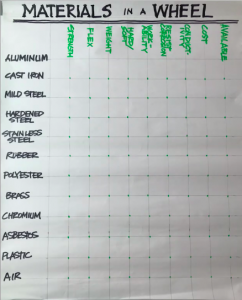
-
- Strong steel, lightweight aluminum
- What forces do to structure diagram
- Materials can resist one force easily and buckle under another force
- Young’s Modulus: relationship between stress and strain
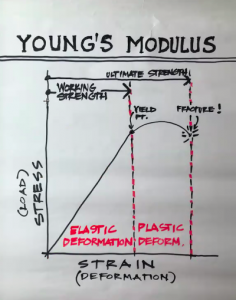
-
- Stress: force, strain: reaction of material to force
- Steel takes high stress, has high strain with little deformation
- There’s a limit to elastic deformation (snaps back to original form), yield point to plastic deformation (not failure but doesn’t come back to original form) until point of fracture.
- Rubber band example
- Any material is a matrix of atoms
- Steel plastic deformation: a wheel
- Littman – Airplanes: pressure + altitude
- Jon – Also why things fail: temperature. Bending a rubber band quickly = high temperature at the molecular level, so bending a rubber band slowly saves its elasticity more than bending it quickly
- Forces acting on a wheel diagram
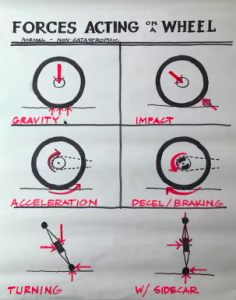
-
- Gravity caused by: load
- Impact caused by: mass resisted by object
- Acceleration: motor’s power torque goes to transmission to chain to sprocket to hub and torqueing transmitted from hub to rim through spokes
- Deceleration: similar to accel: acting
- Most motorcycles: 36 spokes, British motorcycles 40 spokes
- Spokes work in tension, they’re not securely fashioned to the rim
- When you’re accelerating hub, only half of the spokes are contributing
- When they work in compression and spokes are too long, they’ll poke your inner tube
- Spokes don’t go straight to center of wheel because there’s torque on hub and on where tire meets the road. Better when some are off set (so spokes can lengthen/shorten under strain)
- Rim tension hub compression: spokes are in tension
- Web of 40 objects, all of them in tension. Pre-stressed structure
- Unique geometry of wheel: triangular sub structures
- Spokes positioned forward and backward, left and right, creating triangles
- Spokes in wheels also allow air movement: wheels not tipped over by wind
-
- Bike wheel: brake applied on rim. Motorcycle: braking at hub, so spokes have to transfer work to rim
- Spokes aren’t universal; they’re made for specific wheel on specific type of specific motorcycle
- Inside and outside spokes
- Tap the spokes: each give the same musical note, because every one is in harmony
- Jon: all Triumph and British motorcycle repair videos are available to stream on Amazon Prime!
- Wednesday reading: chapters 5 and 6
WEDNESDAY
Show and Tell!
- Littman: wheel with spokes (20 spokes leading, 20 trailing)
- When spokes are in tension, hub rotates -> rim rotates

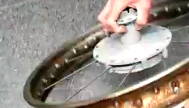
- Rupert: “Meg the 2001 MGF”
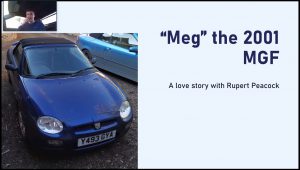
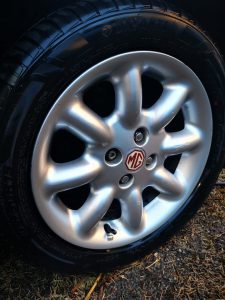
-
- at first: didn’t start, very dirty


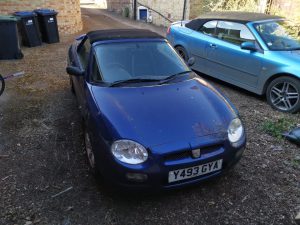

-
- repair: trickle charge the battery
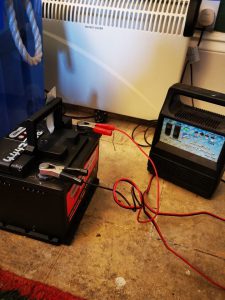
-
- careless design in the “boot”, battery doesn’t fit in the bay so made a makeshift part
- clean the engine, clean and check the fuel system (fuel injectors)
- alternator belt was fixed
- it ran!
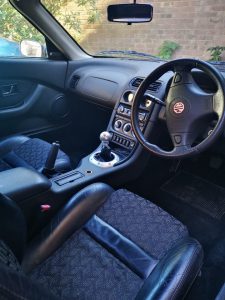
-
- It’s a negative ground battery (negative side connected to the frame)
- Jake: Bike

-
- It’s a 2-stroke engine, so there’s no top end
- Power stroke every two strokes, so if there’s a compression problem, it’s bad
- Problems with fuel being pumped in
- Spark plug worked
- Got it running
- Recently got a chain breaker
- Master link: the one section of the chain that can be manually detached to fix the chain
- 1:20 ratio of oil to fuel
- Shearing issue
- 110 cc engine
- 2 stroke: a little less than 2x power of 4 stroke
- No battery, bump start it, shift and the clutch starts it
- Mountain bike transformed with motorized kit
- It’s a 2-stroke engine, so there’s no top end
- Taylor: “Duster” car
- Before: red car sitting in a field
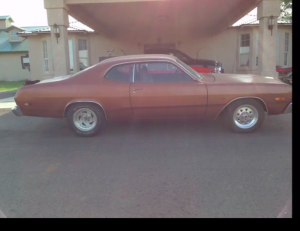
-
- After: green car, doors and fenders not on it right now
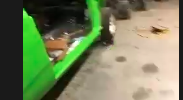

-
- 3-18 specs of motor

-
- Not original motor; it’s a racing engine
- ’67 Shelby in the shop
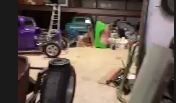
-
- Better heating/AC: more efficient, less space
- Unibody car: doesn’t have a frame
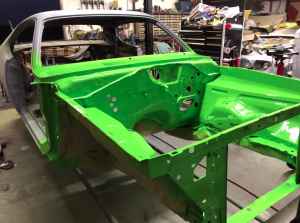
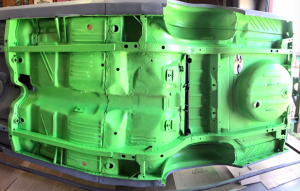
-
- Fuel injection: Holley Sniper
- Gas mileage on truck: 18mpg
- Macey: Land Rover
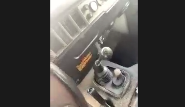
-
- Defender model, 110 inch wheel base
- Leaks, hard to drive
- Kate: 1962 Buick Special, recently fixed up
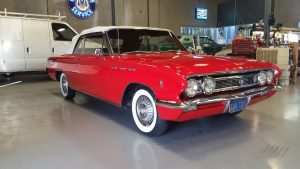
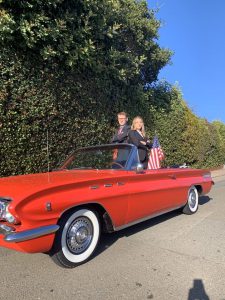
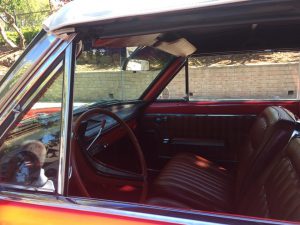
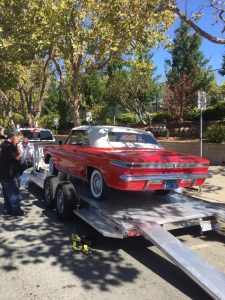
- Fun fact: gas is currently $1
- Jon: motorcycle
- Anna: car
Reading: Chapters 5 and 6
- Motorcycle references
- Resistance to the flow: friction
- Voltage and current
- If you hold a bearing in the center and put compressed air into it, it will spin at high speeds and explode
- Self-absorption: digging too deeply into motorcycle repair (going out of your way to find problems to fix) vs. value of work
- Better safe than sorry: fix it anyway
- Caring too much vs Pirsig’s “idiot” not caring enough. There’s a middle ground
- Silicon Valley work benefits: Google water, swimming pools, laundry service, college education at work
- Attracting workers, keeping them there, keeping them at work longer to increase work hours/productivity
- Teamwork vs individual work as a member of the crew
- Happiness at work: a good job “satisfies the desire to know”
- Can you find fulfillment in having knowledge but not applying it?
For next week: finish Shop Class as Soulcraft